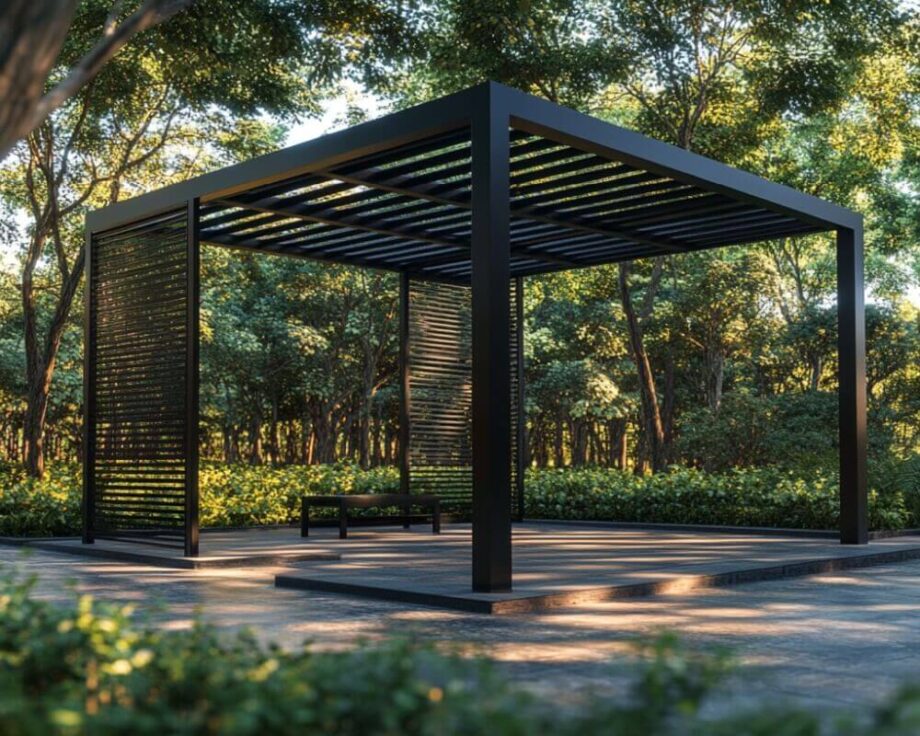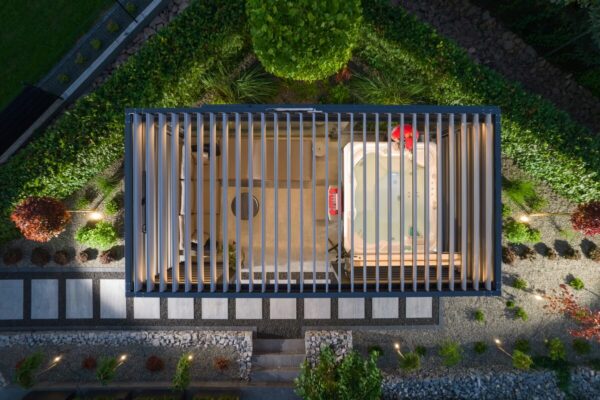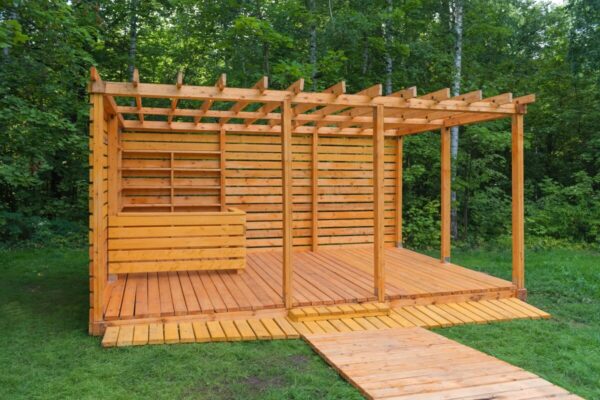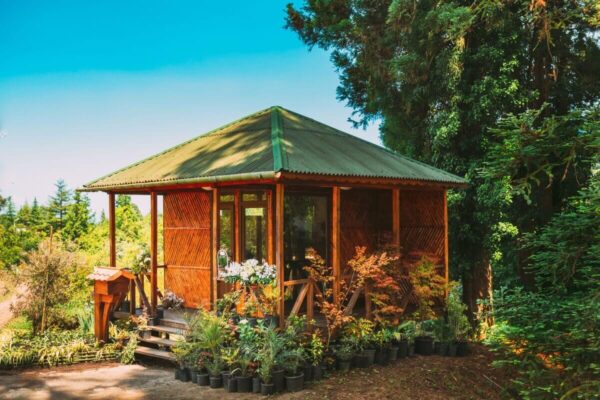Contents
- Importance of wooden slats in modern architecture
- Versatility and adaptability of wooden slats
- Eco-friendly aspects of using wooden slats
- How can wooden slats transform your home design?
- Challenges and solutions in using wooden slats
- Most popular questions and answers
Importance of wooden slats in modern architecture
Wooden slats have become a staple in contemporary architectural design. Their natural aesthetic, versatility, and sustainability make them a popular choice among architects and designers globally. The trend towards more eco-friendly and sustainable building solutions has only heightened their appeal. Wooden slats offer a subtle yet effective way to enhance the appearance of a building, providing a warm, organic texture that complements modern design principles. The use of wooden slats creates a visual rhythm and depth that no other material can match, giving each structure a unique and sophisticated look.
Moreover, wooden slats are not just about aesthetics; they serve functional purposes as well. They provide natural ventilation when used as cladding on the exterior of buildings, and they can also act as shading elements, reducing heat gain during hot weather. This passive cooling measure is not only energy-efficient but also enhances the comfort of occupants. The ability of wooden slats to allow light to filter through while providing privacy is another reason for their popularity. With such a wide array of benefits, it is no surprise that wooden slats are significantly shaping modern architectural landscapes.
Versatility and adaptability of wooden slats
The adaptability of wooden slats is a key reason for their widespread popularity in modern architecture. Whether used indoors or outdoors, they effortlessly blend into various design styles, from rustic to minimalist. One principal advantage is their ability to be customized in terms of size, color, and finish, allowing architects to tailor them to the specific needs of each project. This flexibility enables creative installations that can transform mundane spaces into extraordinary ones.
- Facades: They enhance building exteriors by adding an earthy charm and can be used to cover entire surfaces or create striking accents.
- Interior walls and ceilings: Inside, slats can serve as paneling or ceiling features, creating a cozy atmosphere and improving acoustics.
- Furniture and partitions: Beyond structural uses, they are perfect for creating bespoke furniture pieces or dividing spaces, adding functionality while maintaining a cohesive design theme.
Their ecological credentials also attract architects aiming to minimize their environmental footprint. When sourced from sustainably managed forests, wooden slats are an excellent renewable resource, contributing to eco-friendly building practices. Thus, their adaptability not only supports diverse design intentions but also aligns with sustainability goals.
Eco-friendly aspects of using wooden slats
Wooden slats are not only visually appealing but also promote sustainability in architecture, a crucial aspect in today’s environmentally-conscious world. The use of wood as a building material significantly reduces carbon footprints due to its natural ability to sequester carbon dioxide throughout its life cycle. This makes wooden slats an environmentally-responsible choice, as they store carbon even after harvesting, unlike materials such as steel or concrete that emit high levels of CO2 during production.
Furthermore, wooden slats are biodegradable and can be recycled or repurposed at the end of their life, reducing landfill waste. Using sustainably sourced wood ensures that forests are managed responsibly, promoting biodiversity and reducing deforestation. The production process is generally less energy-intensive compared to other construction materials, contributing to reduced energy consumption overall.
Not only do wooden slats enhance a building’s eco-credentials, but they also improve indoor air quality by moderating humidity levels, creating healthier living environments. This combination of sustainability and health benefits makes wooden slats a preferred material for architects striving to achieve green building certifications and enhance the living experience for occupants.
How can wooden slats transform your home design?
How can wooden slats transform your home design? Incorporating wooden slats into home design can dramatically transform interiors by introducing an element of warmth and natural beauty. As a design feature, wooden slats can redefine spaces, creating both expressive and harmonious environments. Placing them strategically in interiors can yield powerful visual effects and contribute to the overall functionality and aesthetics of a space.
- Aesthetic flexibility: Available in different woods such as cedar, oak, or pine, they cater to diverse tastes and design styles, from contemporary to classic.
- Acoustic improvement: Their texture and spacing can reduce noise levels by absorbing sound, making them perfect for improving acoustics in living areas or home offices.
- Ambient lighting: By filtering sunlight, wooden slats create dynamic lighting effects that can accentuate architectural features or artworks within a space.
To discover how wooden slats can be seamlessly integrated into residential spaces to enhance both aesthetics and functionality, you may find it helpful to explore resources like “How can wooden slats transform your home design?” which provides detailed insights into innovative design ideas and practical applications.
Challenges and solutions in using wooden slats
Despite their numerous benefits and growing popularity, the use of wooden slats can pose several challenges that need to be addressed for successful implementation in architecture. One major consideration is the climate and environmental exposure they will face, as wood can be susceptible to conditions such as humidity, temperature fluctuations, and pest infestations. Proper treatment and maintenance are crucial to ensure longevity and preserve their appearance over time.
In addition, the initial cost of high-quality wooden slats can be relatively high compared to other materials. However, this can be mitigated by the long-term savings in energy costs due to their thermal efficiency and passive climatic advantages. Selecting the right type of wood and finish based on specific environmental conditions and performance expectations can also help turn this challenge into an opportunity.
Installation flexibility is another area that requires careful planning. Ensuring precision in installation can maximize their functional and aesthetic potential. For instance, incorrect spacing can affect airflow and shade, impacting both energy efficiency and visual appeal. By working with experienced professionals and adhering to best practice guidelines, architects can address these challenges effectively and harness the full potential of wooden slats in their projects.
By understanding both the advantages and challenges associated with wooden slats, architects and designers are better equipped to make informed decisions that enhance the beauty, efficiency, and sustainability of their designs, ensuring these materials remain an integral component of modern architecture.
Most popular questions and answers
What are the main benefits of using wooden slats?
The main benefits of using wooden slats include their aesthetic appeal, sustainability, and versatility. These slats offer a warm, natural look that enhances both interior and exterior spaces. Additionally, they promote environmental responsibility and can be customized for various design styles.
How do wooden slats contribute to sustainable architecture?
Wooden slats contribute to sustainable architecture by storing carbon dioxide and reducing greenhouse gas emissions. They are biodegradable, recyclable, and can be ethically sourced, minimizing the environmental impact. Their use in architecture also supports eco-friendly building practices and energy efficiency.
Can wooden slats improve indoor air quality?
Yes, wooden slats can improve indoor air quality by regulating humidity levels. This quality helps create healthier living environments by preventing excess moisture. By doing so, they contribute to overall comfort and well-being in interior spaces.
What are the challenges of using wooden slats in design?
Challenges in using wooden slats in design include susceptibility to environmental conditions like humidity and pest infestations. Maintenance is essential to ensure longevity and appearance. Additionally, the initial cost may be high, but it can be offset by long-term benefits.
Why are wooden slats an investment in home design?
Wooden slats are an investment in home design due to their versatility and aesthetic flexibility. They enhance the beauty and functionality of spaces while being a sustainable choice. Their ability to improve value and appeal in interiors makes them a worthwhile investment.




